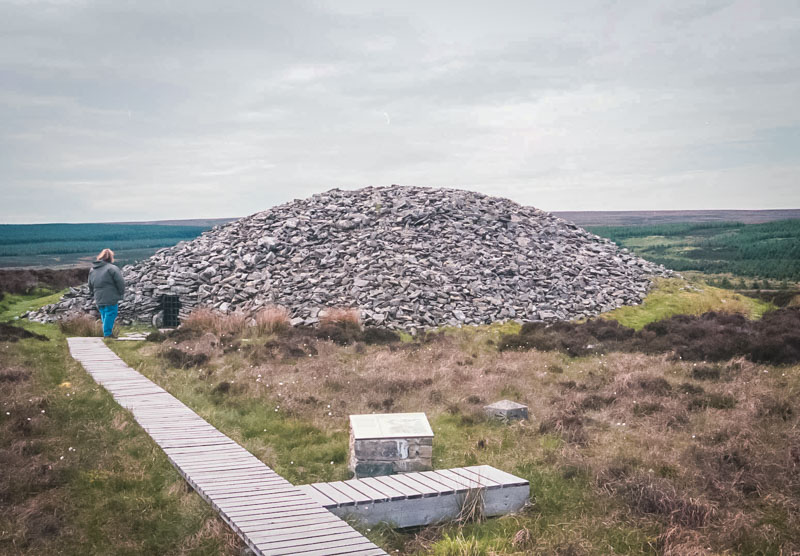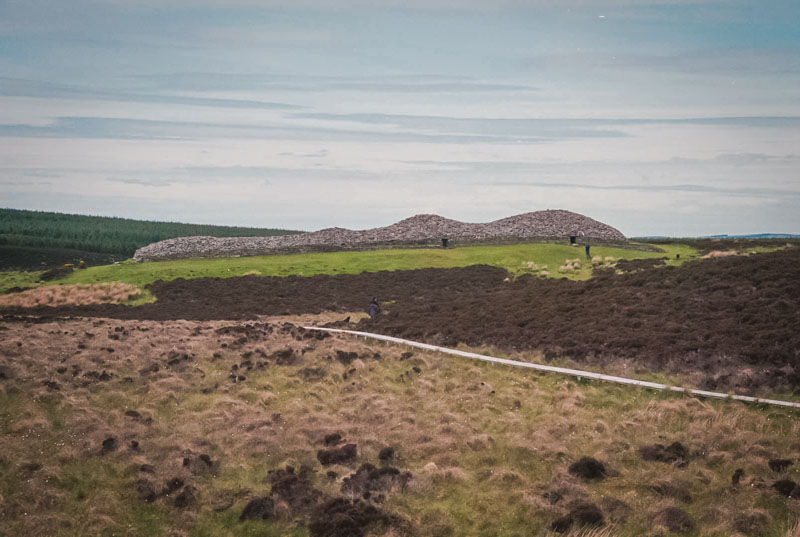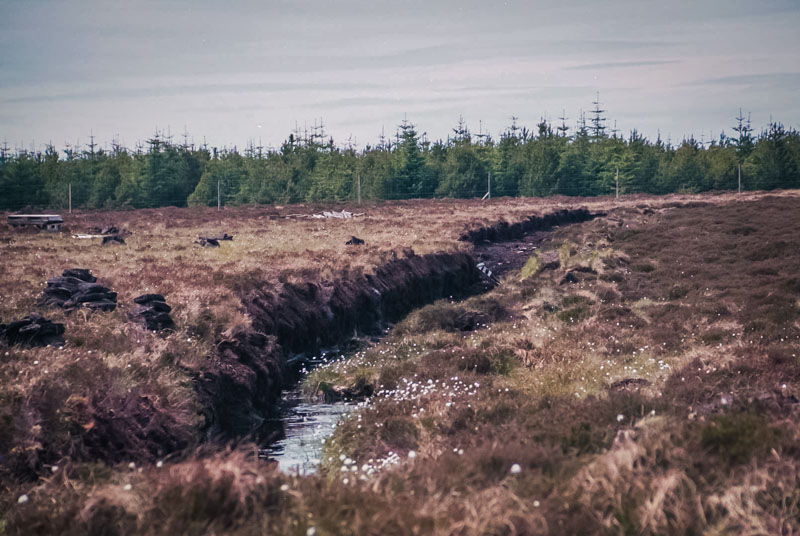
One of the remaining examples of prehistoric stone cairns in Caithness in the bleak moors. The cairns, or burial mounds, date from the Neolithic Period, roughly 4000-1800BC. There are two cairns here, a round cairn, and a long cairn, both of which can be entered through long passages to the

center room. We didn’t visit too many stone circles and cairns, although they are common in the highlands, but these were very interesting.
The entrances are barred with grates, but are not locked, so we crawled inside. It’s a bit of a tight squeeze, and we realized that the stone piles are not really original — the interior is reinforced with concrete and have plexiglass domed pieces to allow light into the center chamber. It was kind of a letdown to realize that they are reconstructions, not original, but it’s hard to imagine that a pile of stones (and there is no mortar) would survive 6000 years without some sort of maintenance.

The cairns sit in boggy ground — there are wooden pathways to each of the cairns over the soggy field — near an active peat bog. It was odd to see the careful stacks of peat, stacked with wooden spacers to dry. I hadn’t realized that people still cut peat by hand and that it was used as fuel, even today.

